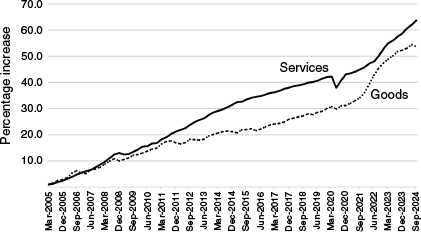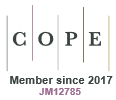‘Booking’ fees for private hospital patients
Steve Robson A *A
Abstract
The vast majority of inpatient procedures in private settings in Australia are performed either with no- or known-gaps. There is a suggestion that some doctors are using ‘booking’ fees in addition – if true, the reasons are very obvious and make good economic sense.
Keywords: booking fees, economics, fees, gap fees, inflation, inpatient, medicine, outcomes, private health insurance, surgery.
Charging a private patient a ‘booking’ fee for a hospital procedure is both legally and ethically problematic. But are ‘booking’ fees a good thing or a bad thing for patients?
It is no surprise that ‘no-gap’ and ‘known-gap’ arrangements have been popular both with patients and private health insurance (PHI) funds. Indeed, they are heavily promoted by PHI funds that, on their websites and online presences, actively direct patients towards surgeons who participate in these schemes. PHI funds have enormous and asymmetric market power.
The cost of healthcare clearly is important to the community – and rightly so. It is important at the outset to understand, however, that there is no evidence of any correlation between fees charged for surgery and the quality of the surgery received by the patient.1 Indeed, there is strong evidence that the best outcomes for patients occur with experienced surgeons who perform a high volume of procedures.2 If PHI funds were serious about providing good patient care it would make more sense for them to direct their policy holders to surgeons with the best outcomes, not the cheapest. More about that later.
The most recent data release from the Australian Prudential Regulation Authority (APRA) reveals that, Australia-wide, the total proportion of in-hospital procedures undertaken at no-gap was 88.3% and a further 9.0% were known-gap.3 APRA data also reveal also that the mean out-of-pocket (OOP) cost for known-gap procedures was A$129.70. Let us put this in perspective: the plumbing website AllNeedsPlumbing.com.au states that the average call-out fee for a plumber in Sydney is between A$90 and A$165. The call-out fee does not include any actual plumbing advice or work.
For surgeons who offer no- or known-gap fees to their patients for hospital and day surgery procedures the agreements that they enter into with PHI funds, typically, include clauses specifying that they will charge a maximum known gap of up to A$500 over an entire episode of care, and that they will include the total fee charged on the invoice or submitted claim. Where does that place so-called ‘booking fees,’ where the surgeon has a fee additional to that for the procedure itself, and usually charged ahead of the operation?
PHI policies offering limited or no OOP costs for policy holders had been possible since 1995. Strong concerns from peak health groups such as the Australian Medical Association (AMA) – centred around well-founded fears that the legislation enabled PHI funds to interfere in the doctor-patient relationship – led to reforms in that early legislation. The ‘Health Legislation Amendment (Gap Cover Schemes) Bill’ enabled the introduction of PHI policies which limited the OOP costs faced by policy holders without a requirement for formal contractual agreements between health insurance funds and medical practitioners.4
Unfortunately, these no- and known-gap schemes have been subject to price caps set by PHI funds: the known-gap limit of A$500 has not changed for decades. The A$500 known-gap limit has, in real terms – because of inflation – fallen in value by 66.4% since it was first imposed. By accepting this figure surgeons are forced now to accept two-thirds less for an OOP than they did when the schemes began. To make things worse, PHI funds peg the underlying rebates to the Medical Benefits Schedule (MBS) meaning that surgeons who agree to use these schemes thus are bound to accept rebates that also have more than halved in real terms. Take cholecystectomy (MBS item number 30443) as a typical example. The MBS schedule fee for cholecystectomy in 2005 was A$639.85. Twenty years later, after decades of feeble or frozen fee indexation,5 the rebate is A$731.85. In real terms the MBS rebate now is 55% lower than it was when the schemes were legislated.
Over the two decades that no- and known-gap rebates have been in play the costs of running a practice – renting office space, employing staff, buying medical indemnity insurance, buying software – have increased (Fig. 1). To take this into account, the AMA publishes a fees list that uses the Consumer Price Index as part of its calculations to ensure that the inflation surgeons are subject to – just like everyone else – has been taken into account in a fair way. Whereas a typical no-gap rebate for cholecystectomy is around A$1000, the AMA’s recommended fee is more than twice that.
Increases in the Consumer Price Indices for goods and services in Australia over the two decades since legislation of no- and known-gap arrangements. Source: Australian Bureau of Statistics (ABS). Consumer Price Index. Accessible at: https://www.abs.gov.au/statistics/economy/price-indexes-and-inflation/consumer-price-index-australia/latest-release#data-downloads.

Setting ceiling prices for professional services – known in economics as a ‘price cap’ – is popular with politicians and payers but, although well-intentioned, rarely achieves its aims.6 That is basic economics. The fundamental issue driving the use of ‘booking fees’ is that, by acquiescing to pressure by PHI funds and politicians, surgeons who participate in the schemes have seen remuneration for surgery more than halve over their careers. At the same time, APRA data reveal that PHI corporate profits are surging.7 As a health economist, it is obvious to me that something has to give.
It is time to sort this ridiculous and unfair system out so that we reward high quality care, not encourage the growth of bargain-basement procedures. In Australia we should be doing everything we can to promote high-value healthcare that is delivered in a timely way. With the public hospital system facing extraordinary pressures, and two-thirds of all inpatient procedures performed in private settings, it makes sense to promote safe, good-quality, high-value care for Australians. The time for reform is long overdue.
References
1 Hillis DJ, Watters D, Malisano L, Bailey N, Rankin D. Variation in the costs of surgery: seeking value. Med J Aust 2017; 206(4): 153-154.
| Crossref | Google Scholar |
2 Guiab K, Evans T, Brigode W, et al. Complications after inpatient laparoscopic cholecystectomy: effect of surgeon experience, procedure volume, and other surgeon-based characteristics. Am Surg 2022; 88(8): 1798-1804.
| Crossref | Google Scholar |
3 Australian Prudential Regulation Authority. Quarterly private health insurance statistics. 28 November 2024. Available at https://www.apra.gov.au/quarterly-private-health-insurance-statistics
4 Australian Parliamentary Library Bills Digests. Bills Digest No. 134: 1999-2000 Health Legislation Amendment (Gap Cover Schemes) Bill 2000. 2000. Available at https://www8.austlii.edu.au/cgi-bin/viewdoc/au/legis/cth/digest/hlacsb2000415/hlacsb2000415.html
5 Dickinson H. Confused about the Medicare rebate freeze? Here’s what you need to know. The Conversation, 20 May, 2016. Available at https://theconversation.com/confused-about-the-medicare-rebate-freeze-heres-what-you-need-to-know-59661
6 Henderson DR. Price controls: Still a bad idea. A market-distorting tactic brings both short- and long-term harm. Hoover Institution, January 20 2022. Available at https://www.hoover.org/research/price-controls-still-bad-idea
7 Catholic Health Australia. New data shows rising health insurer profits as patients lose out. August 15 2024. Available at https://cha.org.au/new-data-shows-rising-health-insurer-profits-as-patients-lose-out/


